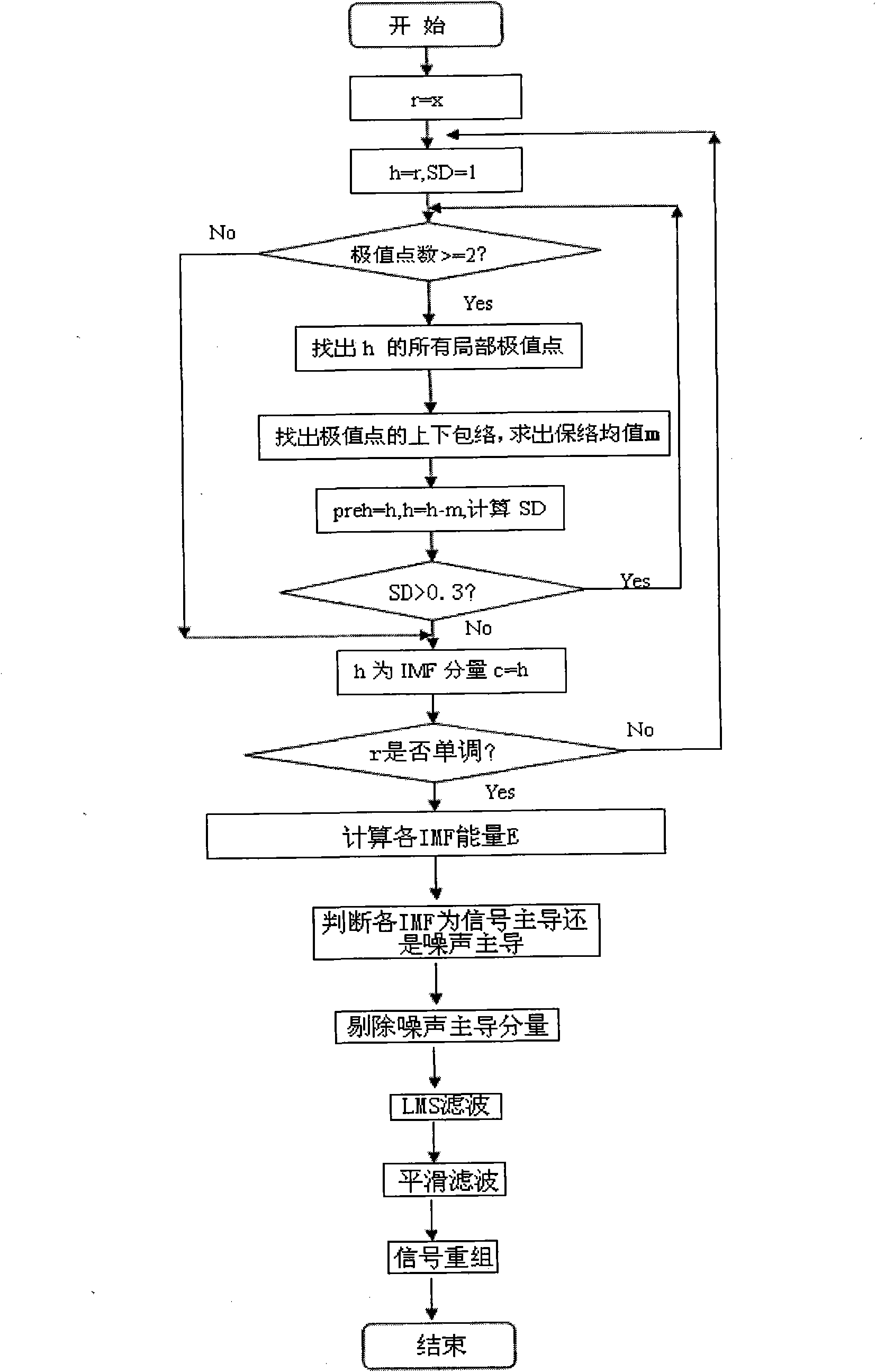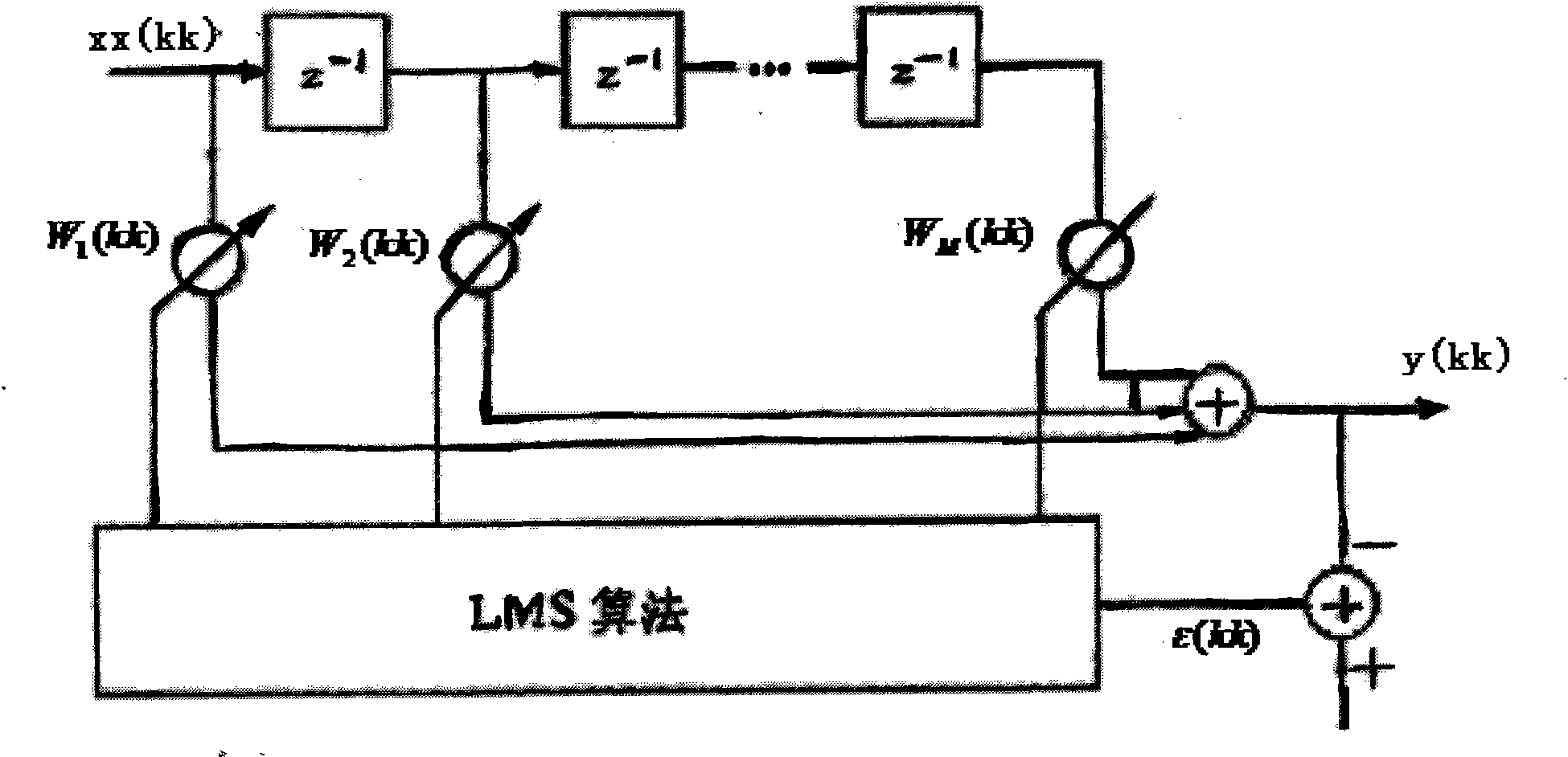De-noising method of transient electromagnetic detecting echo signal
A transient electromagnetic and noise reduction technology, applied in electrical components, transmission noise suppression, transmission systems, etc., can solve the problem of inability to eliminate echo signal noise, inability to accurately obtain deep geological features, and extract target signals of deep geological conditions, etc. problem, to achieve the effect of solving the extraction problem and optimistic noise reduction performance
- Summary
- Abstract
- Description
- Claims
- Application Information
AI Technical Summary
Problems solved by technology
Method used
Image
Examples
Embodiment Construction
[0053] The overall flow of this embodiment of the transient electromagnetic detection and receiving signal noise reduction method is as follows figure 1 As shown, the steps are as follows:
[0054] I. Empirical Mode Decomposition (EMD) of Transient Electromagnetic Detection Received Signals
[0055] First obtain all the extreme points of the signal data x(t), and use the cubic spline interpolation function to form the upper envelope of the data for all the local maximum values. Similarly, use the cubic spline interpolation function to form the data for all the local minimum values The lower envelope of , the upper and lower envelopes should cover all data points, and its mean value is recorded as m 1 , subtract the mean from the original data sequence to get the first component h 1 :
[0056] h 1 =x(t)-m 1
[0057] The above process is called "sieving".
[0058] In the second "sieve" process, the h 1 As the data to be processed, the mean value of the envelope is m 11 ...
PUM
 Login to View More
Login to View More Abstract
Description
Claims
Application Information
 Login to View More
Login to View More - R&D
- Intellectual Property
- Life Sciences
- Materials
- Tech Scout
- Unparalleled Data Quality
- Higher Quality Content
- 60% Fewer Hallucinations
Browse by: Latest US Patents, China's latest patents, Technical Efficacy Thesaurus, Application Domain, Technology Topic, Popular Technical Reports.
© 2025 PatSnap. All rights reserved.Legal|Privacy policy|Modern Slavery Act Transparency Statement|Sitemap|About US| Contact US: help@patsnap.com



